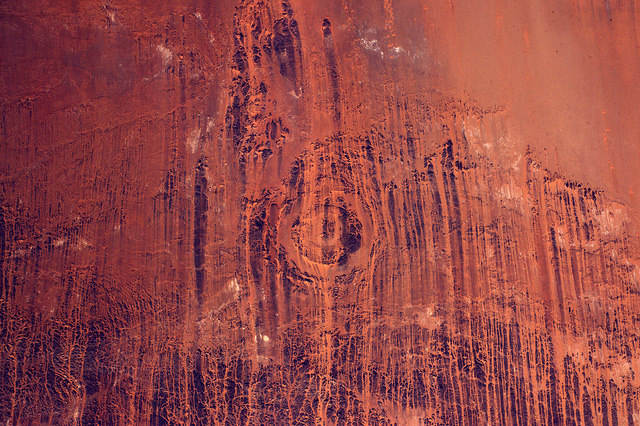Throughout the Proxima mission onboard the ISS from November 2016 to June 2017, French astronaut Thomas Pesquet took many superb photographs of Earth, which he posted on social media. Here, Aorounga impact crater, in Chad.
On 10th March 2017, Thomas Pesquet posted this view of the Sahara with the following comment: "The erosion by the wind is clearly visible in the Sahara desert: as if the paint had flowed over tens of kilometres...".
The image was taken from the ISS on 5th February, using a Nikon D4 equipped with a 210mm telephoto lens. North is at 11 o'clock. We are in the north-central part of Chad, about 250km from the Libyan border and a few tens of kilometers south-east of the Tibesti (partially volcanic) mountain range.
With this photo, Thomas Pesquet proposes his first astroblem ... and his first Yardang. What are those? An astroblem is an old meteorite impact crater, very eroded by the weathering, that is to say by the climatic conditions, past and present. As for a yardang, it is a form of corrasion printed in rock formations, shaped by a prevailing wind, eroding over time the relief in place by imprinting it according to the nature of the rock and its hardness, with steep and gentle slopes, longitudinal slopes. We are in the Sahara, a desert region today, but that has not always been the case.
This impact crater is, therefore, the result of a collision between an extraterrestrial bolide and the Earth. Its current diameter is 12.6km and its undetermined age is well below 345 million years (the Carboniferous geological period). It is impossible to specify the size of the asteroid, its speed, its composition or its origin. It would be necessary to go on the ground to take samples and perform analyses to better understand its history.
What is certain is that its circular structure in concentric rings makes it one of the most beautiful meteorite impacts on the planet. This concentric rings result from the collapses of the impact edges that occurred after the impact. It is a complex crater, as opposed to simple craters that resemble bowls.
It should be pointed out that plate tectonics and erosion in all its forms have erased from the Earth's surface most of the past meteorite impacts, unlike the Moon, Mercury or even Mars. There are 188 impact craters on our planet (identified with certainty) against thousands on the other three bodies. One can also observe the central peak in the middle of the structure. It also comes from the shock and relaxation of the terrestrial matter fluidified under the high pressures and temperatures related to the impact.
As for the yardang, it is here created by a wind that comes from the northeast (from top to bottom on the cliché). It also shapes deposits of orange sands and active dunes that move between the wrinkles to the southwest. Note the sporadic white spots on the surface. They are probably calcareous deposits or perhaps evaporites.
Find the image on Google Maps!
https://www.google.fr/maps/@19.0909754,19.2242326,20044m/data=!3m1!1e3?hl=fr&authuser=0
*Gilles Dawidowicz is a geographer, president of the Planetology Commission of the French astronomical Society.

